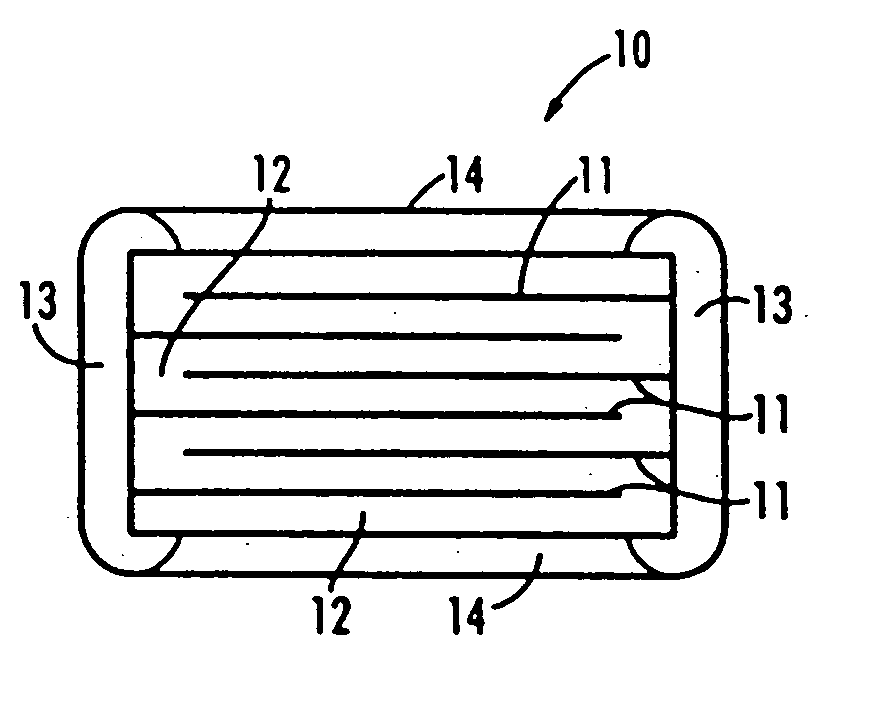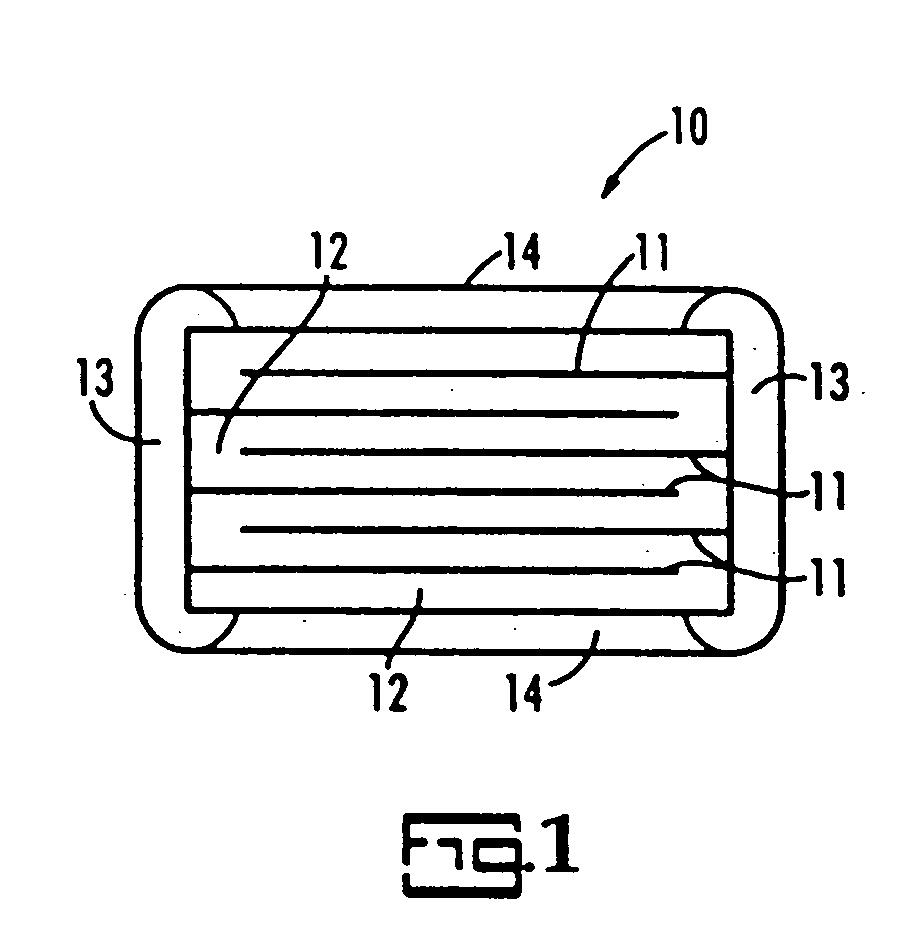Electrode paste for thin nickel electrodes in multilayer ceramic capacitors and finished capacitor containing same
a multi-layer ceramic capacitor and nickel electrode technology, applied in the direction of fixed capacitors, stacked capacitors, fixed capacitor details, etc., can solve the problems of reducing the thickness of the ni electrode layer much below 1 micrometer, electrode layers losing their continuity, adding unwanted thickness to the capacitor, etc., to achieve the effect of not losing conductivity
- Summary
- Abstract
- Description
- Claims
- Application Information
AI Technical Summary
Benefits of technology
Problems solved by technology
Method used
Image
Examples
Embodiment Construction
[0028] The invention is directed to an electrode paste composition in which a powder of nickel oxide (NiO), nickel carbonate (NiCO3), or combinations thereof is used as the main ingredient. When the paste is used to make MLC's, the nickel oxide or nickel carbonate powder is reduced to Ni metal and sinters to become a metallic conductor. The combination of the lower density of NiO and its decomposition to Ni results in a reduction in the volume of the electrode print of about 40.7%. For NiCO3, the reduction in volume is about 75.6%. In addition, it has been found that certain additives, when mixed with the NiO or NiCO3 as a fine powder, or added as a coating or metal-organic compound or liquid, are very effective in suppressing growth of the Ni grains in the fired electrode films.
[0029] The present invention will be described with reference to the figure forming an integral part of the instant disclosure.
[0030] A cross-sectional view of a capacitor of the present invention is illus...
PUM
| Property | Measurement | Unit |
|---|---|---|
| thick | aaaaa | aaaaa |
| thick | aaaaa | aaaaa |
| thick | aaaaa | aaaaa |
Abstract
Description
Claims
Application Information
 Login to View More
Login to View More - Generate Ideas
- Intellectual Property
- Life Sciences
- Materials
- Tech Scout
- Unparalleled Data Quality
- Higher Quality Content
- 60% Fewer Hallucinations
Browse by: Latest US Patents, China's latest patents, Technical Efficacy Thesaurus, Application Domain, Technology Topic, Popular Technical Reports.
© 2025 PatSnap. All rights reserved.Legal|Privacy policy|Modern Slavery Act Transparency Statement|Sitemap|About US| Contact US: help@patsnap.com


